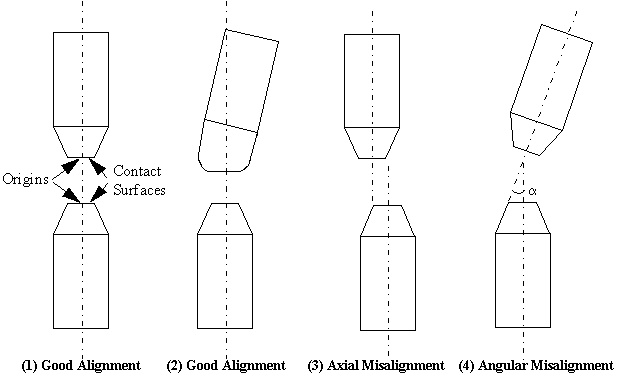Inadequate Electrode Alignment
Definition
In welding position, improper electrode alignment exists when either of the two conditions is true:
- The contact surfaces of the upper and lower electrodes are not parallel;
- The centers of the contact of the upper and lower electrodes are not coincident.
Description
There are two typical classes of electrode misalignment, axial misalignment and angular misalignment, as shown in the figure. In the figure, Case (1) represents good alignment, Case (2) represents another possibility of good alignment. Case (3) is a typical axial misalignment. Case (4) is a typical angular misalignment (with angularity ).

Detection
- Electrode Skidding/Sliding
- Cracks and Holes
- Expulsion/Burn Through
- Mislocated/Edge Weld
- Nonround Weld
- Sheet Metal Distortion
- Poor Class A Appearance
- Undersized Weld
- Visual inspection of closed gun tips with no workpiece
- Observation of twisted workpiece during welding process
- Visual inspection of weld indentations
Significance
Quality, Workplace Issues, Cost, Downtime, Maintenance, Throughput (cycle time; PPH), are all potentially affected by this condition. Special considerations are noted below:
Maintenance: due to the excessive wear of the electrodes, more maintenance is required to dress or replace the electrodes.
Subordinate Causes
- Poor Mechanical Connection
- Wrong Shank
- Wrong Tips
- Poorly fixtured parts
- Worn-out weld gun

